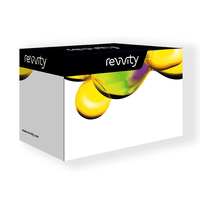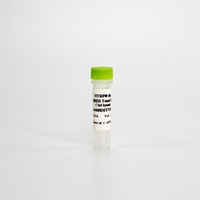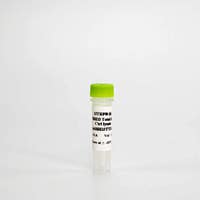

HTRF Human Total BRD3 Detection Kit, 500 Assay Points
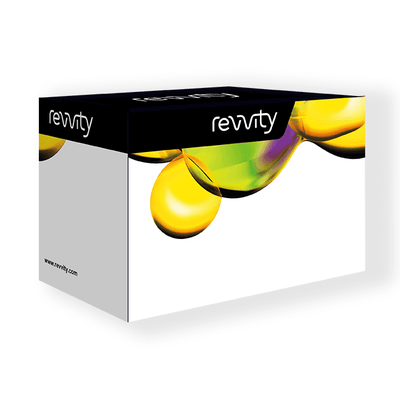

HTRF Human Total BRD3 Detection Kit, 500 Assay Points
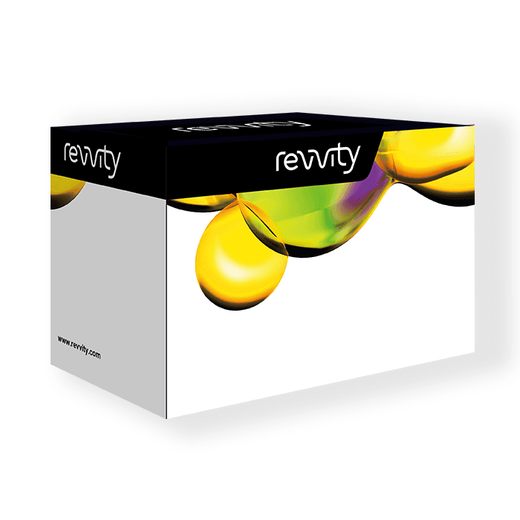


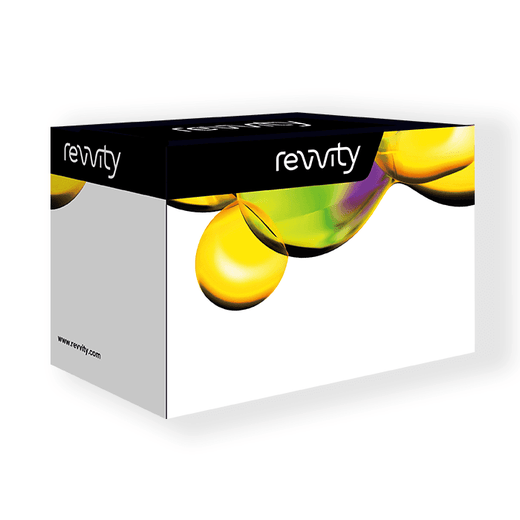


The Total BRD3 kit is designed to quantify the expression level of BRD3 in cells.
For research use only. Not for use in diagnostic procedures. All products to be used in accordance with applicable laws and regulations including without limitation, consumption and disposal requirements under European REACH regulations (EC 1907/2006).
| Feature | Specification |
|---|---|
| Application | Cell Signaling |
| Sample Volume | 16 µL |
The Total BRD3 kit is designed to quantify the expression level of BRD3 in cells.



HTRF Human Total BRD3 Detection Kit, 500 Assay Points



HTRF Human Total BRD3 Detection Kit, 500 Assay Points



Product information
Overview
BRD3 belongs to the bromodomain (BRD) Family II (BET). Like the other BRD family proteins, it binds to acetylated lysine and acts as a reader of the lysine acetylation state of proteins such as histones. It is a transcriptional regulator involved in many cell processes (embryogenesis, cycle regulation, development) through the E2F-RB pathway. BRD3 interacts with the GATA transcription factor for its chromatin occupancy and the regulation of several oncogenes, such as c-MYC.
Thus, inhibition of BRD3 function has become part of the strategy for cancer treatments. More recently, targeting BET family protein degradation, including BRD3 via PROTAC molecules, has emerged as a novel and promising therapeutic approach.
Specifications
| Application |
Cell Signaling
|
|---|---|
| Automation Compatible |
Yes
|
| Brand |
HTRF
|
| Detection Modality |
HTRF
|
| Molecular Modification |
Total
|
| Product Group |
Kit
|
| Sample Volume |
16 µL
|
| Shipping Conditions |
Shipped in Dry Ice
|
| Target Class |
Phosphoproteins
|
| Target Species |
Human
|
| Technology |
TR-FRET
|
| Therapeutic Area |
Oncology & Inflammation
|
| Unit Size |
500 Assay Points
|
Video gallery

HTRF Human Total BRD3 Detection Kit, 500 Assay Points

HTRF Human Total BRD3 Detection Kit, 500 Assay Points

How it works
Total-BRD3 assay principle
The HTRF Total-BRD3 assay quantifies the expression level of BRD3 in a cell lysate. Unlike Western Blot, the assay is entirely plate-based and does not require gels, electrophoresis, or transfer. The Total-BRD3 assay uses two labeled antibodies: one coupled to a donor fluorophore, the other to an acceptor. Both antibodies are highly specific for a distinct epitope on the protein. In presence of BRD3 in a cell extract, the addition of these conjugates brings the donor fluorophore into close proximity with the acceptor, and thereby generates a FRET signal. Its intensity is directly proportional to the concentration of the protein present in the sample, and provides a means of assessing the protein’s expression under a no-wash assay format

Total-BRD3 two-plate assay protocol
The two-plate protocol involves culturing cells in a 96-well plate before lysis, then transferring lysates into a 384-well low volume detection plate before the addition of Total-BRD3 HTRF detection reagents. This protocol enables the cells' viability and confluence to be monitored.

Total-BRD3 one-plate assay protocol
Detection of Total-BRD3 with HTRF reagents can be performed in a single plate used for culturing, stimulation, and lysis. No washing steps are required. This HTS designed protocol enables miniaturization while maintaining robust HTRF quality.

Assay validation
Validation on various Human cell lines
The adherent Human cell lines MCF7 (mammary gland), HEK293(Embryonic kidney), and HeLa (Cervix), were plated in 96-well culture plates at a density of 100,000 cells /well and incubated for 24 hours at 37°C, 5% CO2. After culture medium removal, the cells were lysed with 50 µL of supplemented lysis buffer #4 (1X).
The BRD3 expression level was assessed with the HTRF Total BRD3 kit. Briefly, 16 µL of cell lysate were transferred into a low volume white microplate, followed by 4 µL of premixed HTRF detection reagents. The HTRF signal was recorded after an overnight incubation at RT. The dotted line corresponds to the non-specific HTRF signal. Note that the cell density was optimized beforehand to ensure HTRF detection within the dynamic range of the kit (data not shown).
The HTRF Total BRD3 assay efficiently detects BRD3 in various cellular models expressing different levels of the protein.

PROTAC® induced BRD3 degradation


| PROTAC® | Described POI | Warheads | E3L ligands | Published potencies | DC50 |
|---|---|---|---|---|---|
| dBET6 | BET Family | JQ1 derivative | Thalidomide (Cereblon Ligand) | 14-50 nM | 67 nM |
| ARV-771 | BET Family | JQ1 derivative | VHL-1 (VHL Ligand) | 8-34 nM | 33 nM |
| MZP-54 | BET Family | I-BET726 | VH032 (VHL Ligand) | 50-300 nM | 22 nM |
| dBRD9 | BRD9 Selective | BI7273 | Pomalidomide (Cereblon Ligand) | Non-targeting BRD3 | No degradation |
| ARV-471 | ERα | Irrelevant for BRD2 target | No degradation | ||
Specificity of HTRF Total BRD3 assay using knockout HAP1 cell lines
The BRD3 expression level was assessed with our HTRF total BRD3 kit in HAP1 cells (WT) and five different HAP1 cell lines Knocked-Out for BRD2, BRD4 (BET Family), BRD7, or BRD9 (Family IV). The cell density was optimized beforehand to ensure HTRF detection within the dynamic range of the kit (data not shown).
The 6 different cell lines were cultured in a 96-well plate (50,000 cells/well) for 24 hours at 37°C, 5% CO2. After culture medium removal, the cells were lysed with 50 µL of supplemented lysis buffer #4 (1X), then 16 µL of cell lysate were transferred into a low volume white microplate followed by 4 µL of premixed detection reagents. The HTRF signal was recorded after an overnight incubation at RT.
In HAP1 KO BRD3 cells, the HTRF signal was equivalent to the non-specific signal (dotted line) indicating a complete BRD3 gene silencing, whereas the BRD3 level was well detected in the other cell lines, as expected.
Note that i) No decrease in the BRD3 level was detected in KO BRD2, BRD4, BRD7, and BRD9 cell lines compared to the WT HAP1, demonstrating the selectivity of the HTRF BRD3 kit over BRD2, BRD4 , BRD7, and BRD9 ii) BRD2 and BRD4 expression levels are significantly higher in HAP1 KO BRD2 and HAP1 KO BRD4 than Wt HAP1, suggesting a compensatory mechanism.

HTRF Total BRD3 assay compared to Western Blot
HeLa cells were cultured in a T175 flask in complete culture medium at 37°C, 5% CO2. After 48h of incubation and cell medium removal, the cells were lysed with 3 mL of supplemented lysis buffer #4 (1X) for 30 minutes at RT under gentle shaking.
Serial dilutions of the cell lysate were performed using supplemented lysis buffer#4, and 16 µL of each dilution were transferred into a low volume white microplate before the addition of 4 µL of HTRF total BRD3 detection reagents.
Equal amounts of lysates were used for a side-by-side comparison between HTRF and Western Blot.
In these conditions, the HTRF total BRD3 assay was 2-fold more sensitive than the Western Blot technique.

Simplified pathway
BRD3 Signaling Pathway
BRD3 binds to the hyperacetylated chromatin regions, also called super-enhancer regions, and plays a role in the regulation of transcription. It provides a scaffold on chromatin to recruit proteins such as E2F proteins for chromatin remodeling. BRD3 is also recruited by the transcription factor GATA1 when acetylated by CREB-binding protein (CRB), to both activate and repress target genes and promote its chromatin occupancy.

Resources
Are you looking for resources, click on the resource type to explore further.
Discover the versatility and precision of Homogeneous Time-Resolved Fluorescence (HTRF) technology. Our HTRF portfolio offers a...
This guide provides you an overview of HTRF applications in several therapeutic areas.
SDS, COAs, Manuals and more
Are you looking for technical documents related to the product? We have categorized them in dedicated sections below. Explore now.
-
LanguageEnglishCountryUnited States
-
LanguageFrenchCountryFrance
-
LanguageGermanCountryGermany
-
LanguageGreekCountryGreece
-
LanguageItalianCountryItaly
-
LanguageSpanishCountrySpain
-
LanguageEnglishCountryUnited Kingdom
-
Resource typeManualLanguageEnglishCountry-


How can we help you?
We are here to answer your questions.































